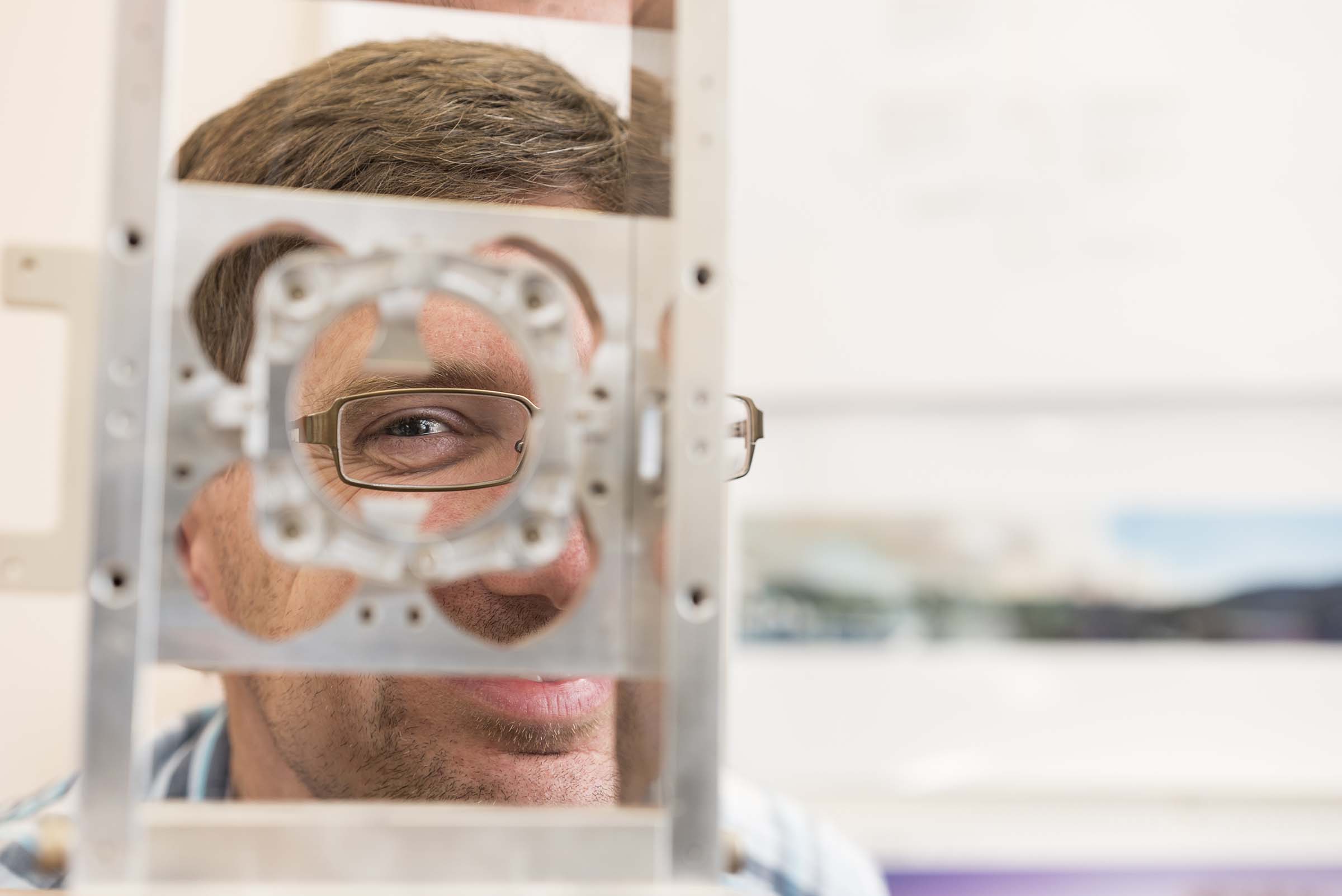One small wave, one very big deal
Experimental physicist Dr Bram Slagmolen has created a tool that measures with unimaginable precision.
But when it comes to his feelings on the recent success of his work, he’s anything but measured.
“It’s absolutely amazing. It’s fantastic, it’s brilliant. I’m ecstatic.”
Dr Slagmolen has reason to celebrate. Together with 11 colleagues at the ANU Research School of Physics and Engineering, and over 1,000 scientists around the world, he has made a critical contribution to what is being hailed as the scientific breakthrough of the century: the detection of gravitational waves.
“It is a massive thing. I would say you won’t see anything bigger in your lifetime,” he says before remembering his scientific restraint. “Actually I suppose I shouldn’t say that, because I guess, you never know, there could be something.”
The headline-grabbing gravitational waves recently detected by the Laser Interferometer Gravitational-wave Observatory (LIGO) in the USA were generated by two black holes colliding, the most violent event ever recorded.
But while this event was huge, the signals it generated were incredibly small, requiring measurements of something 10,000 times shorter than the width of a proton.
To capture these signals, laser interferometers at LIGO measured the precise distance between a system of mirrors located four kilometres apart. Any change in the distance would mean a gravitational wave passing through.
The problem with this technique, however, was how to bring the mirrors to their ideal operating position, defined to atomlevel precision, in a repeatable way.
Physicists from ANU resolved this with an Arm Length Stabilisation System, used to lock and calibrate the position of the mirrors while being able to accommodate a disruption like an earthquake.
“Getting LIGO to operation point happened much faster because of our Arm Length Stabilisation System,” Dr Slagmolen explains.
“As a result, the testing process to get the interferometer to the required sensitivity went from taking years to taking only months.“
"And we can say that was thanks to ANU."
“To design something, build it, install it, and then see it actually used for this monumental result, makes us all very proud.”
The ANU Research School of Physics and Engineering constitutes Australia’s largest university-based physics research activity, incorporating major national facilities, national networks, a significant technical manufacturing and prototyping capability, as well as an innovative teaching program.
Our research activity includes nonlinear and quantum optics and quantum systems engineering, soft and hard condensed matter physics, III-V semiconductor physics, nano-engineered and meso-scale materials, nuclear physics, novel imaging technologies and plasma science.
We foster the development of novel technologies and have seen a number of successful spin-out companies go global.

